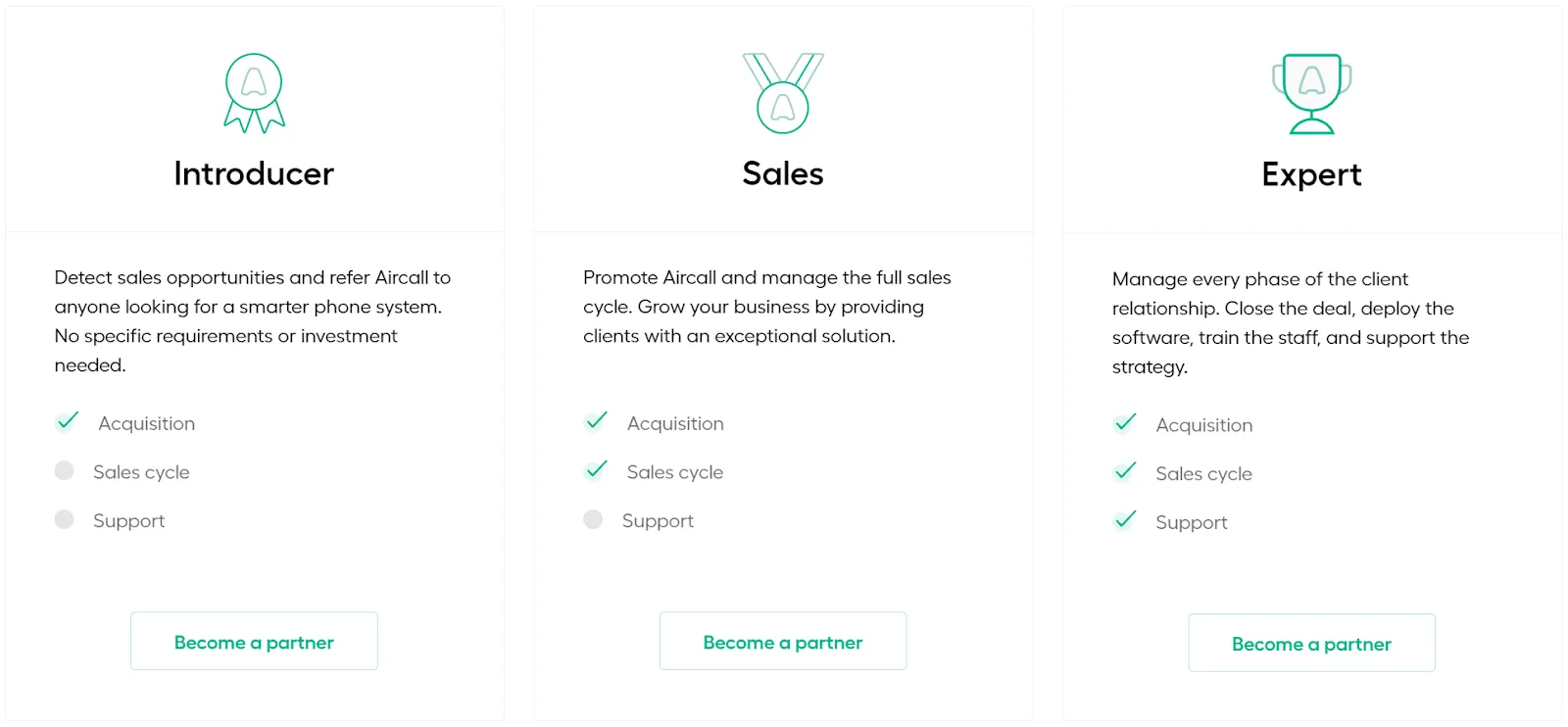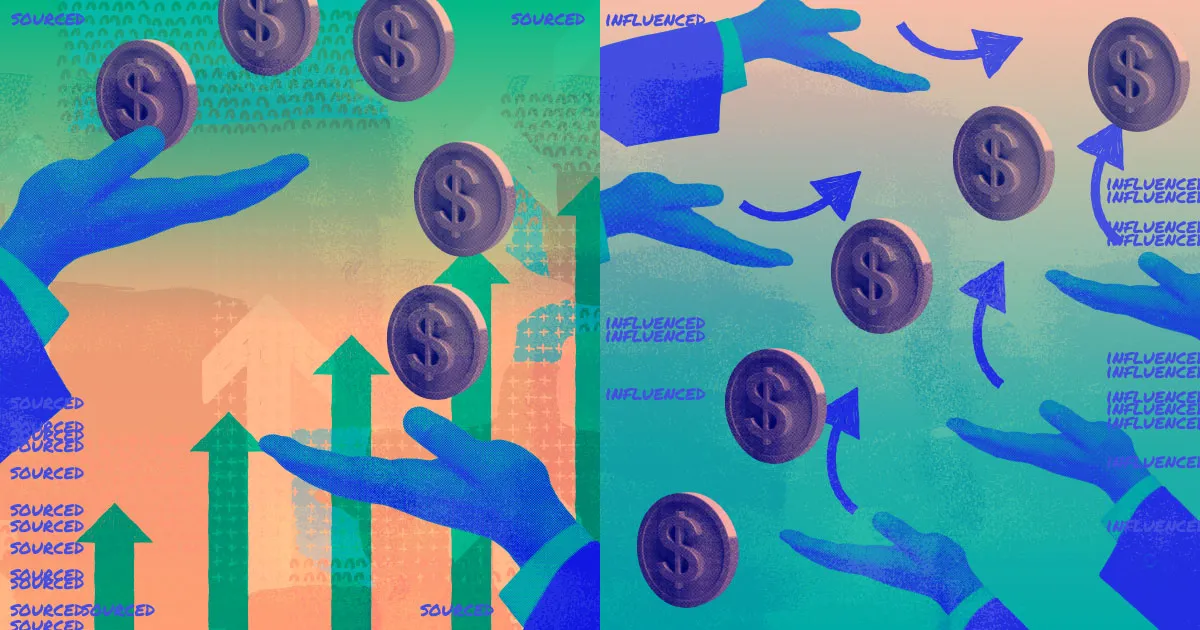Previously in our Path to SaaS Channel Readiness series, we covered viewing partnerships as a pyramid that you build up through multiple partner channels, starting with affiliate partners — the partners that make sense for most SaaS companies to start with.
In part 3 of this series, we’re moving up the pyramid to explore referral partners: who they are, how they create value, and how to recruit the right ones.
But first: what makes referral partners different from affiliate partners?
Referral partners vs. affiliate partners
While affiliate partners and referral partners are both third parties that promote your product (typically) in exchange for a commission on paying customers, they do so in different ways.
While affiliates drive traffic that you’re responsible for converting into leads and deals, referral partners send you leads directly. Referral partners typically know more about the people they are referring, often having a direct one-to-one relationship, meaning the leads they send tend to be highly qualified. Affiliate partners, by comparison, promote your product through content created for larger-scale audiences that they likely don’t have a direct relationship with.
This isn’t to say that one type of partner is better than the other; they just reach different audiences and have different goals. For example, affiliate partners are incredibly valuable for building brand awareness with key audiences because they create content around your product for you. That isn’t something that referral partners will prioritize.
The most common types of referral partners
- Association partners: Partnering with associations in your industry offers you access to communities of prospects who look to these associations as leaders in your space. With a pulse (and influence) on the trends, topics, and best practices, getting these associations referring their members to you allows your brand to be top of mind when their problems need solutions.
- Franchisors: Partnering with key franchisors whose business model utilizes your SaaS solution creates the opportunity for them to refer their franchisees as new leads. At the same time, you are able to establish your brand as the standard in the franchising process.
- Customer advocates: Creating opportunities within your own customer journey for your brand advocates to become referral partners offers you access to their peers and connections, other key users that fit your ideal customer profile (ICP).
- Agencies: While some agencies prefer to own the sale of your solution and work more like resellers, others prefer having a lighter touch when referring their clients to you. This might be because your software is a relatively smaller part of the package of services they offer
- External sales and customer success (CS) teams: The teams of products that integrate with yours typically have a fair understanding of your value proposition as well as your ICP. Taking a look at the SaaS products that complement yours might highlight key referral partners to go after.
How do they drive revenue?
Link-based referral partner (more hands-off)
This type of partner is similar to affiliates in that they operate primarily through unique links that track and attribute conversions to them. However, while affiliates’ main aim is to promote your solution and drive larger amounts of traffic to your properties, referral partners drive more specific, qualified leads. For example, an affiliate would integrate their link into a blogpost, while referral partners would send their link via an email to a peer in the same industry who might have mentioned they needed to solve a certain problem. They both ultimately drive value through links, but they are fundamentally different in how they utilize their links (driving traffic vs. direct high-level qualified leads).

As you might have guessed, the attribution cycle of a link based referral partner is similar to an affiliate partner’s:
- Partner A applies to your program. Their application is reviewed and approved by you.
- Partner A receives a unique trackable link found on their partner dashboard which directs to your website or landing page.
- Partner A provides this link to Referral X.
- Referral X clicks the link and that micro-conversion is now attributed to Partner A through tracking cookies.
- Referral X is now considered a lead driven (or at least influenced) by Partner A and if they convert into a paid customer, Partner A is rewarded through the partner platform.
Lead form based partner (more hands-on)
The other type of referral partner makes use of lead forms instead of links. These types of partners have a closer relationship with their referrals, in that they know key (and qualifying) information about these leads that they are able to share with you through a lead submission form that sends the lead’s information directly to your team for follow-up.
Depending on the tools you’re using, this process also gives your partner visibility into how their referral proceeds through the buying cycle. When referral partners submit leads to you through PartnerStack, for example, it syncs directly to your CRM and automatically updates the status of the contact both in your CRM and inside PartnerStack, so both you and your partner can easily see the status of any referred lead.
The entire process of a referral partner using a lead form to submit leads to you looks like this:
See more: Busting the most common myths about affiliate marketing.

- Partner A applies to your program. Their application is reviewed and approved by you.
- Partner A decides that Peer X might benefit from your software. Partner A knows Peer X’s industry, the size of their company, and other key information that fits your software’s ICP.
- Partner A fills in and submits a predetermined lead form with Peer X’s details that you are able to use to qualify/disqualify the lead they are referring.
- Your internal team is notified that there is a new lead submitted for them to qualify.
• If the team deems the lead disqualified, the lead status is updated and Partner A is notified.
• If the team deems the lead qualified, Partner A is notified and will have visibility as the status of the lead changes as the sales cycle progresses (e.g. from Qualified to Closed Won, Closed Lost, Signed Up, Paid).
*The two-way sync between your partner platform and CRM will enable you to track and update the lead status from either platform.
- Once Peer X has converted (eg. into a paid customer), a reward is triggered on the partner platform for Partner A to withdraw.
How do you compensate them?
A large part of recruiting and retaining high-value referral partners is offering an attractive incentive. Aligning your incentive to the expectations of the partner can also determine whether they choose to promote your solution over a competitor’s. Because of the closer relationship referral partners tend to have with their referrals (at least compared to affiliates), monetary compensation might not be enough to incentivize them. Additional support, resources, and value they are able to offer their clients might be the deciding factors that lead them to become your partner.
With that in mind, there are two main compensation structures common in affiliate programs:
- A flat rate, wherein the partner receives a fixed dollar amount per conversion. This is more commonly used within the B2C space and less in B2B SaaS partner programs, but can make sense depending on the type of partner and product (e.g. customer advocates for a low-cost subscription product).
- A revenue share structure wherein instead of being paid once, partners are given a portion of the revenue they generate within a time frame (eg. Maropost rewards partners “10% commission for the first 12 months of the life of the account” they refer) or on an ongoing basis (eg. Unbounce rewards partners “a 20% lifetime cut of every transaction for as long as they’re an Unbounce customer”). Typically, in B2B SaaS, a revenue share structure is more suitable to the complexity of the product and the buying cycle.
How do you recruit them?
There are many similarities between effectively recruiting affiliates and referral partners such as making use of your owned channels (website footer, social, email), utilizing the reach of a partner network like the PartnerStack Marketplace, and even using a third party partner recruitment provider like Grovia.
The key difference when recruiting referral partners specifically is that reaching out to partners with account-based strategies becomes more crucial. This doesn’t work as well with affiliates because of the scale of affiliate communities.
Crafting your recruitment strategy is also the opportune time to refine the ideal partner profiles you’ve developed throughout the progress of your affiliate program. The process of improving the detail of those profiles should be informed by the insight and knowledge you’ve gained about your affiliate partners and the deals they’ve won/lost, giving you a clearer idea of your best-fit referral partners.
Integrate your referral program into your customer journey. As your customers achieve milestones, submit an NPS (Net Promoter Score), or develop a closer relationship with their customer success manager (CSM), place checkpoints that start the conversation around becoming a referral partner. This can be as simple as an email campaign or targeted outreach through their CSM meetings. Customer advocates are usually always keen to endorse you to their peers and appreciate the opportunity to be rewarded for it.
Foster a relationship with key industry associations. Becoming an active member of industry associations, participating or sponsoring in events and conferences, will help you create new connections with potential partners.
Monitor product integrations. Taking stock of the technology integrations your product has developed, and ones that have been developed for your product as a straightforward strategy to reach your ideal partner profile. This will highlight strategic connections they can provide to your target audience through referrals. Actively reach out to those companies’ sales and marketing teams and map out the opportunities in their customer journey to submit referrals to you.
Best in class referral partnership example: Aircall
The cloud-powered call center platform Aircall runs its referral and reseller programs on PartnerStack, and today drives over 20% of business from its partner programs — a 3900% increase from before they ran partnerships through PartnerStack.
Related: The path to SaaS channel readiness: affiliate partners.

Partners in Aircall's referral program can refer leads to Aircall directly through their PartnerStack partner portal, or through referral links. In either case, they earn a cut of the revenue on every Aircall license they help sell.
Aircall has customized their referral form inside PartnerStack to ask partners key questions about incoming leads, such as what their use case is and what the main technical integration required is. When creating lead forms for your referral partners, you should consult your sales team to understand the information that will best help them follow up with leads and close the deal. It’s small details like this that can give you an edge when going against competitors in the buying process.
When partners submit a lead through a referral form inside PartnerStack, that information is synced back to Aircall's Salesforce database. The same is true if partners refer through links instead; if the referred contact converts, it will automatically be attributed to the partner.
Learn how Aircall has grown partnerships to 20% of all business with PartnerStack →
What comes next
Launching a referral program enables you to take practical steps towards becoming fully channel-ready and solidify the pillars of your partnerships strategy all while driving new revenue. One of the reasons we recommend starting with affiliate partners before referral partners is that you can use your learnings from your affiliate program to inform elements of your referral program, like its:
- Ideal partner profile
- Ideal customer profile for partners
- Reward/incentive structures
- Onboarding and resources
In the next and final part in our Path to SaaS Channel Readiness series, we cover what that process looks like as you summit the partnerships pyramid and establish a reseller partner program, becoming fully channel-ready.

















